Karolyi: English A18
1.c4 Nf6 2.Nc3 e6 3.e4
d5
|
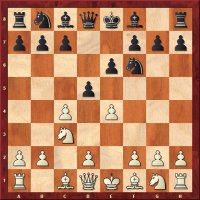 |
|
The author analyses the Mikenas Variation with
3…d5 from White’s point of view and
suggests 4.cxd5 (instead of 4.e5)
4…exd5 5.e5. Now 5…d4 and 5…Ne4
are the most important variations; in both lines
White should achieve a slight advantage. |
Stohl: Benko Gambit A57
1.d4
Nf6
2.c4 c5 3.d5 b5 4.Qc2
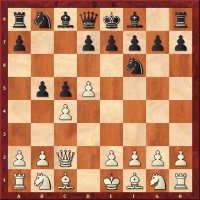 |
|
The setup for White investigated by Igor Stohl
is really simple: White wants to play e4, but
holds back on developing the
Nb1
till Black has clarified his intentions about
the b-pawn. The critical variation begins with
4…dxc4 5.e4 e6. |
Marin: Dutch Defence A86
1.d4 f5 2.g3 Nf6 3.Bg2
g6 4.c4 Bg7 5.Nc3 0-0 6.Nh3 e6
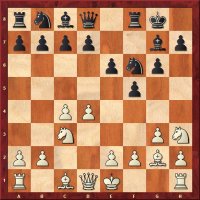 |
|
When White plays 6.Nh3
he intends to play d5 and
Nf4;
Black fortifies himself against this setup with
6…e6 intending to follow up with …d6 and
…e5. If White develops normally, Black has
nothing to fear, but up until now more
aggressive attempts have not yet led to success. |
Skembris: Caro-Kann B17
1.e4 c6 2.d4 d5 3.Nc3
dxe4 4.Nxe4 Nd7 5.Ng5 Ngf6 6.Bd3 g6
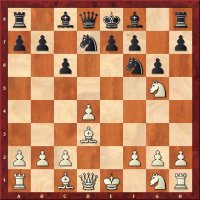 |
|
6…g6 (instead of the very
frequently played 6…e6) has a bad reputation,
but Skembris manages to prove in his article
that this is simply due to a few early traps.
Black can hope for a good game after 6…g6. |
Kuzmin: Caro-Kann B18
1.e4 c6 2.d4 d5 3.Nc3
dxe4 4.Nxe4 Bf5 5.Nc5
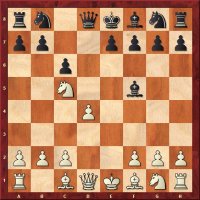 |
|
With this provocative knight move, White would
like to create a weakness in the black camp,
even if all he manages to do is to force the
queen on to an unfavourable square. 5…Nd7
is worth consideration, but by far the most
frequent move is 5…b6. |
Postny: Scotch C45
1.e4 e5 2.Nf3 Nc6 3.d4
exd4 4.Nxd4 Bb4+ 5.c3 Bc5
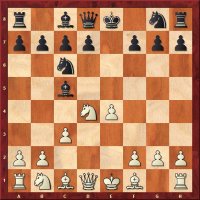 |
|
By choosing the side line 4…Bb4+
Black side-steps a whole heap of opening theory,
but nevertheless manages to obtain good
prospects for a level game. White must play
5.c3, after which it is not easy to develop
the
Nb1
to a good square. |
Kovalov: Italian Game C50
1.e4 e5 2.Nf3 Nc6
3.Bc4 Bc5 4.0-0 Nf6 5.d4!?
 |
|
This gambit leads after 5…exd4 6.e5 into the Max
Lange Attack. 5…Nxd4
is weak on account of 6.Nxe5.
Black must play 5…Bxd4
6.Nxd4
Nxd4
7.f4 d6.
Movsesian (White) defeated Adams in this line –
a good enough reason to study it. |
Langrock: Ruy Lopez C68
1.e4 e5 2.Nf3 Nc6
3.Bb5 a6 4.Bxc6 dxc6 5.0-0 Qf6
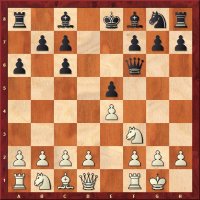 |
|
Black wants to protect the e5-pawn, just like
with 5…Qd6,
but without 6.Na3
being a danger for him. The main line is 6.d4
exd4 7.Bg5,
but as Langrock explains, Black can equalise and
here he has the advantage that there is so far
not a lot of theory. |
Marin: Ruy Lopez C93
1.e4 e5 2.Nf3 Nc6
3.Bb5 a6 4.Ba4 Nf6 5.0-0 Be7 6.Re1 b5 7.Bb3 d6 8.c3 0-0
9.h3 h6 10.d4 Re8
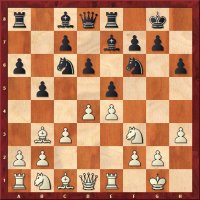 |
|
In the second part of his investigations into
the Smyslov Variation, our author examines a few
side lines, which, however, also do not give
White any prospect of an opening advantage. |
Grivas: Queen's Gambit D38
1.d4 d5 2.c4 e6 3.Nf3
Nf6 4.Nc3 Bb4 5.cxd5 exd5 6.Bg5
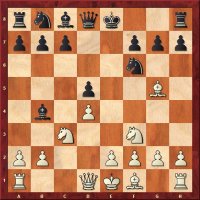 |
|
This is another part of a 1.d4 repertoire
presented by Grivas. The author avoids the more
intensively studied theoretical lines above all
with an early
Rc1
and nevertheless possesses prospects of a slight
opening advantage. |
Krasenkow: Grünfeld Defence D98/D99
1.d4 Nf6 2.c4 g6 3.Nc3
d5 4.Nf3 Bg7 5.Qb3 dxc4 6.Qxc4 0-0 7.e4 Bg4
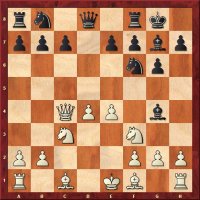 |
|
The Smyslov Variation 7…Bg4
has slightly fallen out of fashion nowadays, but
Krasenkow has played it himself and is of the
opinion that Black obtains decent positions. |
Bojkov: King's Indian Defence E90
1.d4 Nf6 2.c4 g6 3.Nc3
Bg7 4.e4 d6 5.Nf3 0-0 6.h3 e5 7.dxe5 dxe5 8.Qxd8 Rxd8
9.Bg5 Na6 10.Nd5 Rd6
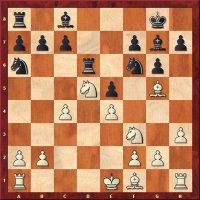 |
|
This article directed at the Exchange Variation
of the King’s Indian is written from the point
of view of Black and it is clear that the author
has more in mind than simply a draw. He makes
good use of his own (positive) exp |